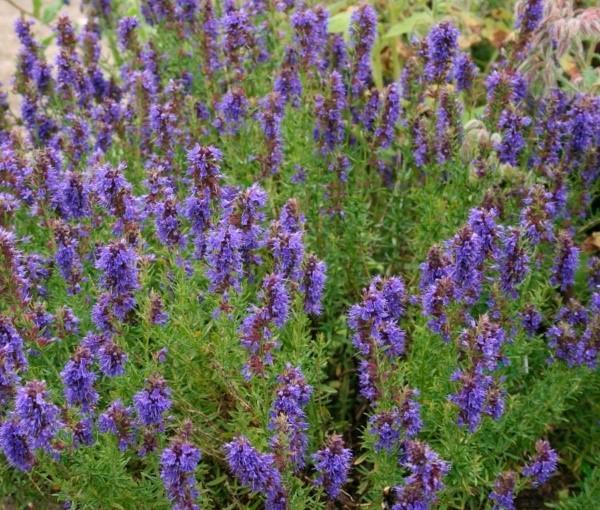Blue St. John's wort or hyssop is a medicinal herb in your flower bed
 Did you know that there is blue St. John's wort? So the people call the hyssop herb for its appearance and heavenly color of flowers. This perennial can often be found not only in nature, but also in flower beds. The unpretentious nature, medicinal properties and beautiful decorative appearance make it a welcome guest in the garden. And given that hyssop exudes a sweet aroma and is a good honey plant, it is not surprising that it is often planted on site. What does blue St. John's wort look like, where does it prefer to grow and what properties does it have?
Did you know that there is blue St. John's wort? So the people call the hyssop herb for its appearance and heavenly color of flowers. This perennial can often be found not only in nature, but also in flower beds. The unpretentious nature, medicinal properties and beautiful decorative appearance make it a welcome guest in the garden. And given that hyssop exudes a sweet aroma and is a good honey plant, it is not surprising that it is often planted on site. What does blue St. John's wort look like, where does it prefer to grow and what properties does it have?
What is hyssop
Blue St. John's wort grows in the form of a herbaceous bush, consisting of many erect shoots. They are covered with small and hard dark green foliage, and at the bottom they branch out, letting out lateral stems. Young twigs are colored green, but over time they turn almost brown.
If the leaves are rubbed, the aroma of spices becomes clearly noticeable, and they taste slightly bitter. Thanks to this, hyssop is also used as a spice, adding to various dishes.
Hyssop blooms all summer and until mid-autumn, in turn revealing small flowers in the axils of the leaves on the upper part of the shoot. Long, spike-shaped inflorescences are most often colored blue, but there are types hyssop with white or pink flowers.
For the preparation of medicinal teas and infusions, hyssop is harvested in the same way as real St. John's wort - during flowering. The twigs are plucked along with the inflorescences. The collection of fruits (small nuts with very small seeds) is started in the fall, after they are fully ripe. As a spicy herb, it is advisable to cut off young twigs.
Blue St. John's wort - features of growing in the garden
Hyssop can also be grown as an ornamental crop. Lush bushes with pale blue flowers look great when planted in rows. Overgrown plants create a living border at all, with which you can emphasize the boundaries of the flower bed or develop it into segments. Hyssop is similar in appearance to lavender.
Hyssop is propagated by seeds, cuttings or dividing the bush. In order for it to bloom profusely and for a long time, it is necessary to plant blue St. John's wort in a sunny place. The soil should be light, moderately moist and fertile. You can add humus and potassium-phosphorus fertilizers before planting. Hyssop is not demanding in care: regular watering, weeding, periodic feeding - that's all he needs. Unless you need to cut the bushes for the winter so that they grow faster in the spring. However, this is not necessary, and then in winter the hyssop will turn green from under the snow.
The healing properties of blue St. John's wort
Hyssop is one of the plants rich in essential oils. But these are far from all the beneficial substances that it contains. Fragrant shoots and flowers contain a large amount of tannins,
Herbal tea made from sprigs of blue St. John's wort has a healing effect on the human body and is indicated for use when:
- rheumatism;
- poor digestion, colitis and gastritis;
- chest pain;
- bronchial asthma;
- problems with the nervous system and many other diseases.
Hyssop is also used to prepare tinctures for gargling and for lotions. They can wash wounds to relieve inflammation and heal quickly.